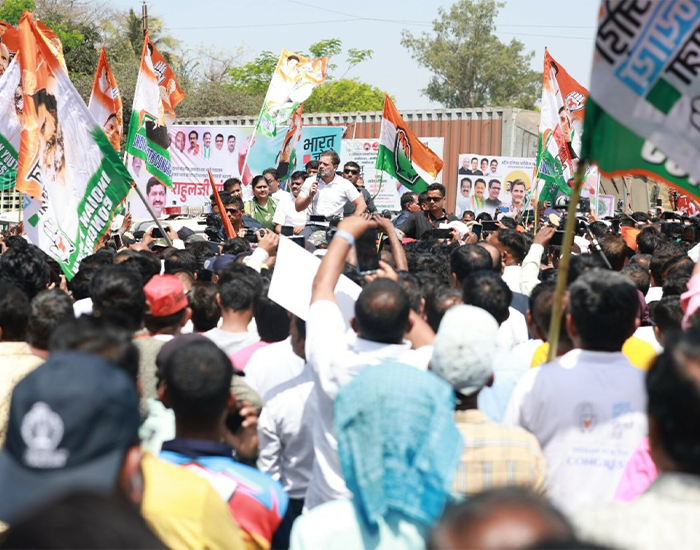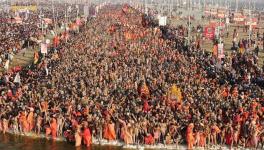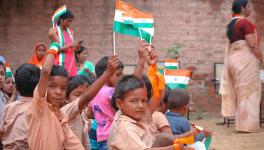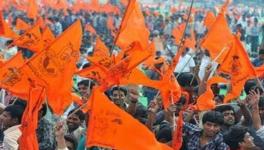Was ‘Bharat Jodo Yatra’ Subversive?

Rahul Gandhi's Bharat Jodo Nyay Yatra. Image Credit: bharatjodoyatra.in
As Assembly elections in Maharashtra are progressing; the mindset of the Bharatiya Janata Party (BJP) was expressed in a clear way by the Maharashtra Deputy Chief Minister, previous Chief Minister and a top BJP leader Devendra Fadnavis. In an interview to Times Of India, and in several speeches, he links the downward performance of BJP in the 2024 Lok Sabha Elections to the Bharat Jodo Yatra.
As per Fadnavis, the BJP failed to counter the narrative set by the Yatra. This led to the decline of BJP seats in the Lok Sabha from 23 (2019) to 9 (2024). In this context, he has approached various organisations (30) affiliated to the Rashtriya Swayamasevak Sangh or RSS to set a counter narrative. He also revealed an open secret that when in trouble, he consults his parent organisation RSS to brighten the electoral prospects of BJP.
Just to recall, the first yatra by Rahul Gandhi was called the ‘Bharat Jodo Yatra’, which started on September 7, 2022, from the South in Kanyakumari, Tamil Nadu. This was concluded in January 2023, in the North in Srinagar, Jammu and Kashmir. It covered 4,080 km, across 12 states.
The second one called Bharat Jodo Nyay Yatra travelled from the East to the West. This started on January14 from Thoubal in Manipur, which covered 6,713 km through 15 states before culminating in Mumbai on March 16.
As per Fadnavis, now Rahul Gandhi is surrounded by ‘urban Naxals’ and ‘ultra Left’ elements and is less of a Congressman and more of an ‘ultra Left’ ideologue!
For Right-wing Hindu nationalists, true to their Guru M.S. Golwalkar’s formulation (Bunch of Thoughts, page 133,) Muslims, Christians and communists are the internal threats to the Hindu Nation. Fadnavis and his ilk will label anything against the agenda of Hindu Rashtra (Nation) as either pampering Muslims or Christians or ‘Urban Naxals’ or ‘Ultra Left’ today. The word ‘Urban Naxal’ has been coined for all human rights activists. The word ‘Ultra Left’ is used by them for mostly those working for the rights of all deprived sections of society.
Why was Bharat Jodo Yatra (BJY) conceived and taken out? Clearly, the then eight-nine-year-old Narendra Modi government’s rule had stifled the voices being raised for protection of values inherent in the Indian Constitution. BJY was the culmination of the social discomfort due to government policies that were being directed against the citizenship rights of Muslims, against the worsening plight of average people. It was conceived to unite India on the lines of what Mahatma Gandhi did while leading the anti-colonial movement.
What was the agenda of the BJY? As clear from the title, its aim was to instil a sense of oneness among Indians, irrespective of their caste, colour, religion and gender? It aired the demands of the most disadvantaged sections of social groups’ rights through various slogans, including the one demanding a caste census.
The response to this yatra was magical; making people from most strata of life join it or see its spectacle from the sidelines. They perceived that long years of divisive politics and implementation of policies that favoured the rich and affluent were harming the unity of the country and the plight of average people. They perceived that this event would restore the situation in a better direction.
The BJY stood in stark contrast to the Yatra taken out by Fadnavis’ peer Lal Krishna Advani. That yatra (Advani’s Rath Yatra) was on an emotive issue around a make believe notion of a Hindu temple having been destroyed centuries ago by a Muslim king. Advani’s yatra saw bloodshed all the way on its route. And later when its fall-out, the Babri Masjid demolition took place, much more violence was witnessed and hate against Muslims got further entrenched in the society. That Yatra, which Fadnavis welcomed with glee, led to the upswing and strength of the communal party.
This Yatra (BJY) was a total contrast. There was no emotive issue. It kept the Indian Constitution at the centre and united Indians on the identity of Indians. Fadnavis is more concerned about the ‘red cover’ of the book (Constitution) that Rahul Gandhi flags, because the contents of this book don’t matter to him. And he also forgets that this red cover edition of the Constitution was presented by his ‘Supreme Leader’ Narendra Modi to former President Ram Nath Kovind.
There was an apprehension during BJY whether the visible support to the Yatra would change the electoral equations. While not fully but in part, the Yatra has dented the then prevailing electoral dominance of communal parties. To its great credit, the statement BJY is impacting the Maharashtra Assembly elections. Coming straight from the horse’s mouth (Fadnavis), is a big validation of BJY’s impact on electoral politics.
So far, the dominant discourse was that of the prevalent Hindu Right- wing nationalism. That has been partly combated by the BJY, while more needs to be done. Challenging the divisive communal discourse, which has been leading to hate, fear and ghettoisation of the minorities, is partly challenged but a lot more needs to be done in this direction. What the Mahatma had begun in a very powerful way was to give a message of unity of people cutting across religions. That’s what BJY tried, and needs to take it further.
Another important fallout of the Yatra was laying the foundations of social platforms like Bharat Jodo Abhiyan and Eddulu Karnataka. These have the potential to boost the values of the Indian Constitution. These groups working for the ‘rights’ of diverse deprived and ‘less equal’ sections of society, have been coming together as collectives, where they can assist each other in preserving the values of Indian Constitution. These groups are diverse, dedicated and firm on equal rights for all.
The concept of rights for all is very troublesome for the Right-wing. In their agenda between ‘rights and duties’, there is a neat division. For them, the affluent have all the rights and the deprived have all the duties.
This is akin to the feudal kingdom systems where kings, landlords, and priests were endowed with all the rights and the lower sections, including women, had all the duties. So was the distribution of and wealth.
Thanks to Fadnavis, we now know clearly that BJP suffered a setback due to BJY. Thanks to Fadnavis, we know more clearly the deeper relations between RSS, its progeny (which are not in electoral politics) and BJP, which is their front on the electoral chess board. All this was known, but coming from the BJP leader himself, there should be no doubt about it now!
The writer is a human rights activist, who taught at IIT Bombay. The views are personal.
Get the latest reports & analysis with people's perspective on Protests, movements & deep analytical videos, discussions of the current affairs in your Telegram app. Subscribe to NewsClick's Telegram channel & get Real-Time updates on stories, as they get published on our website.
























